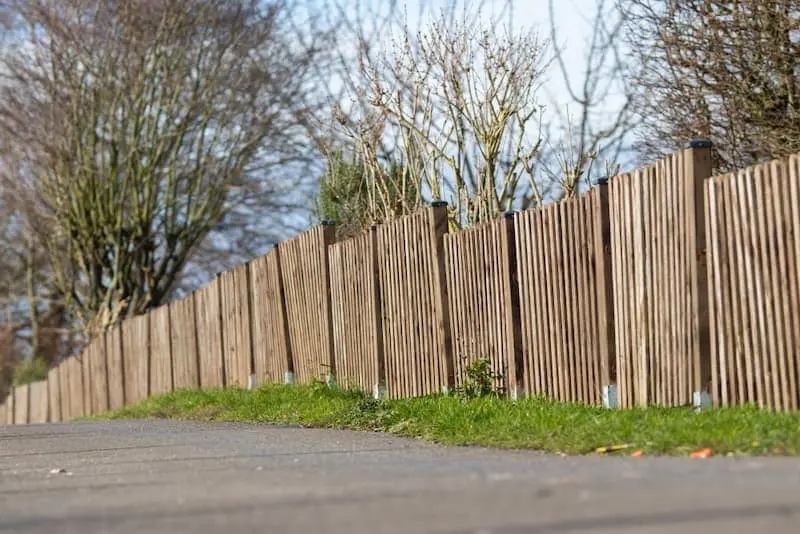You found your dream home. But you’re not so sure about the lot.
You love the idea of creating an outdoor living space. But can you really make a functional space out of a sloped piece of land?
With the help of retaining walls, you have a lot of options.
Building a retaining wall can transform your landscape by creating level areas in sloped terrains, preventing soil erosion, and adding aesthetic appeal to your outdoor space. You can still create the outdoor living space of your dreams.
However, there are several crucial considerations before you start a retaining wall project to ensure longevity, functionality, and beauty in your structure. Let’s take a look at what you should consider before pulling out your shovel and rubber mallet.
1. Understanding Drainage
Effective drainage is perhaps the most critical aspect of retaining wall design. Poor drainage can lead to water buildup behind the wall, creating hydrostatic pressure that can cause the wall to fail.
Drainage Solutions
You have a few options to choose from when it comes to drainage in your retaining wall. Here are some that might work for your space:
- Weep Holes: These small openings allow water to pass through the wall, relieving pressure.
- Drainage Pipes: Perforated pipes installed behind the wall direct water away from the structure.
- Gravel Backfill: Gravel or crushed stone behind the wall helps with drainage and prevents soil from becoming waterlogged.
Figure out which drainage solution (or, better yet, solutions) will work best for your yard. Consulting with a retaining wall designer to ensure your choices are up to par is never a bad idea.
2. Choosing the Right Material
The choice of material affects both the appearance and the structural integrity of your retaining wall. Consider these options:
- Concrete Blocks: Durable and versatile, ideal for modern, sleek designs.
- Natural Stone: Offers a timeless, natural look, perfect for rustic or traditional settings.
- Wood: Provides a warm, organic feel but may require more maintenance over time.
- Brick: Classic and sturdy, great for formal garden settings.
Cost Considerations
Different materials have varying costs. To help you make your decision, find the sweet spot between your budget constraints and your desired aesthetic.
3. Assessing the Soil and Grading
Before construction, it’s vital to understand the type of soil you’re working with. Soil characteristics determine the wall’s foundation requirements and stability.
- Clay Soil: Clay soil expands and contracts with moisture changes. A retaining wall built in clay soil will require careful drainage planning.
- Sandy Soil: Soil that is sandy drains well, but a retaining wall built in sandy soil may require additional stabilization to be a strong structure.
- Loamy Soil: Loamy soil is ideal for most construction but still benefits from a solid foundation and good drainage.
Proper Grading
Proper grading ensures that water flows away from the retaining wall, reducing the risk of erosion and pressure buildup. This might involve reshaping the landscape around the wall to direct water flow appropriately.
4. Design and Engineering
For walls above a certain height (typically over 4 feet), it may be necessary to consult a structural engineer to ensure the wall’s stability and safety. The structural integrity of the wall is of the utmost importance when building a retaining wall near your home. Engineering considerations might include:
- Wall Height and Thickness: Taller walls need to be thicker to withstand greater pressure.
- Reinforcement: Using rebar or geogrid materials can add strength.
- Footing Design: A strong base is crucial for stability, particularly on sloped or unstable terrains.
Permitting and Regulations
Before starting construction, check the local building codes and obtain the necessary permits. Regulations may dictate wall height, materials, and engineering requirements. Professional retaining wall builders will be able to meet the necessary requirements for your area.
5. Aesthetic Considerations
Your retaining wall should complement the overall design of your landscape. Consider the existing or planned elements such as gardens, patios, and walkways.
After your wall is complete, incorporate finishing touches or design features like lighting, planters, or seating areas to enhance functionality and visual appeal.
Conclusion
Building a retaining wall is a significant investment in your property that requires careful planning and execution. By considering drainage, material choice, soil type, grading, and aesthetic integration, you ensure that your retaining wall is not only functional but also a beautiful addition to your landscape.
For the best results, consult with professional retaining wall contractors to guide you through the process, and ensure your retaining wall stands the test of time.
Video
Infographic
A retaining wall can enhance your landscape by leveling sloped areas, preventing soil erosion, and adding beauty to your outdoor space. Before starting your project, consider important factors to ensure the wall’s longevity and functionality. Check out this infographic for key considerations before getting started.



